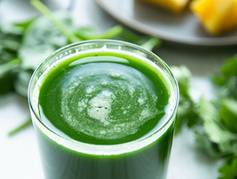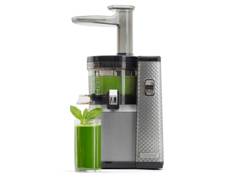Guide to Juicing
Following the 80/20 Rule


Ideally, when you are juicing, you will select and mix ingredients that are proportioned in the ratio of 80% vegetables (or low sugar fruit) and 20% fruit (or high sugar content vegetables).
At Nama, we are big believers that your juices should primarily contain vegetables with only a small amount of fruit. This is because juices that are primarily made with sweet fruits will produce a juice that is very sweet (think pure orange juice). Juices that are made up mostly of fruit can lead to blood sugar spikes and weight gain. It’s simply too much concentrated sugar for our bodies to process. That’s why we support the 80/20 Rule.
What does that mean?
It means that ideally, when you are juicing, you will select and mix ingredients that are proportioned in the ratio of 80% vegetables (or low sugar fruit) and 20% fruit (or high sugar content vegetables). Another way to look at this is that you would use 4 equal parts of vegetables (or low sugar fruit) mixed with 1 part of fruit (or high sugar content vegetables).
So how would this work?
In the chart below we have listed some examples of sweeter (high sugar) fruits and vegetables as well as a list of vegetables and fruit that are neutral or low in sugar. If you wish to make a juice that follows the 80/20 rule you could select one part from the sweet ingredient suggestions and four parts from the opposite column of neutral or low sugar ingredients. There are infinite combinations of fruits and vegetables that can achieve this 80/20 mix. Below we have made just a few suggestions. More recipe ideas can be found on the recipe section of our website.
Ideally, when you are juicing, you will select and mix ingredients that are proportioned in the ratio of 80% vegetables (or low sugar fruit) and 20% fruit (or high sugar content vegetables).
| Examples of Sweet Ingredients (Choose 1 Part) | Examples of Neutral Low Sugar Ingredients (Choose 4 Parts) |
| Apple Pear Watermelon Peach Cantaloupe Orange Carrots Tangerines Beets Grape Mango Pineapple Honey Dew Melon Kiwi | Cucumber Celery Kale Cilantro Lemon Lime Spinach (and other leafy greens) Parsley Cabbage Grapefruit Fennel Tomato Cabbage Red and Green Peppers |
Here are some possible examples:
One cup of apple + four cups or cucumber
One cup of pear + two cups of celery + two cups spinach
One cup of grapes + two cups of cucumber + one cup lemon + one cup fennel
These guidelines are only suggestions and the portions can be your best guess, this is not an exact science. Juicing is supposed to be fun and at the end of the day you want it to taste good. For these reasons you might find that if you are new to juicing you could find yourself wanting to add more fruit to the recipe in order to make your juice sweeter. But over time, there is a good chance that your taste buds will shift and you may like your juice less sweet.
Drinking the Rainbow
Most people tend to make mostly green juices. Nothing wrong with this but if you want to “drink the rainbow” and maximize the amounts of beneficial micro-nutrients and phytochemicals found in colorful fruits and vegetables, it is important to mix up our juice colors. We suggest that about half of the time that you make juices that are green in color. The other half of the time you could make yellow, orange, pink, red, pink and purple juices and everything in between. The more colors and variety the better!
At Nama, we believe that eating your fruits and vegetables and getting all of the benefits of the whole plant is the ultimate goal. Juicing is a great way of adding 5 of more servings in a single, large juice. Your juice is full of soluble fiber, nutrients, vitamins and minerals and is a great way of keeping your body hydrated and increasing your daily consumption of fruits and vegetables. We encourage you to drink at least one juice per day following the 80/20 rule!
- Choosing a selection results in a full page refresh.
- Press the space key then arrow keys to make a selection.





